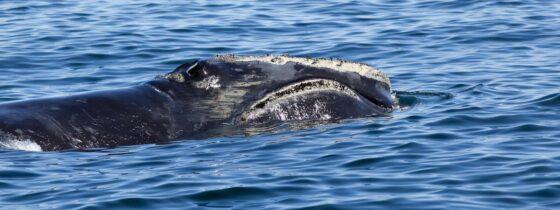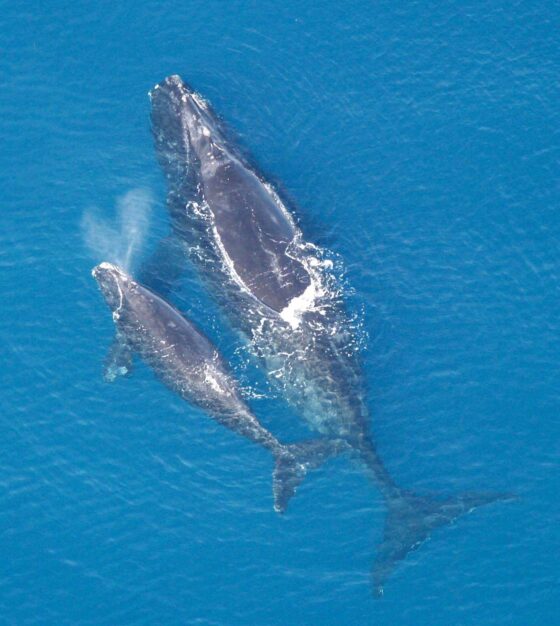
Proposed Atlantic vessel speed rules to protect endangered whales

The National Marine Fisheries Service (NMFS) has released a new proposed vessel speed rule that aims to reduce the risk of vessels striking critically endangered North Atlantic right whales, of which only around 330 remain.
Collisions with vessels are one of two leading causes of injury and death for North Atlantic right whales, which are dark in colour and difficult to spot, swim slowly at the water’s surface, and lack a dorsal fin.
The previous vessel speed rule was issued in 2008, and this updated proposed rule contains critical changes such as including vessels greater than 35ft in length (compared to the previous 65ft), expanding seasonal speed zones, and upgrading current voluntary speed zones to mandatory in areas where whales are seen.
While NFMS maintains there are strong improvements on the previous rule, international advocacy organisation Oceana says the proposed rule can go even further by removing the exemptions for federal vessels and improved enforcement of the regulations. NMFS is accepting comments on its proposed rule for 60 days.
Oceana is urgently calling on NMFS to continue to revise the vessel speed regulations for the US Atlantic to remove exemptions for government vessels; require vessels to carry and continuously transmit automatic identification system (AIS) devices for public vessel tracking; and improve enforcement of speed limits.
In a January 2021 analysis, NMFS found that vessel compliance with the current vessel speed regulations is inadequate, particularly in voluntary speed zones. In July 2021, Oceana reinforced those findings when it published a report detailing that most vessels are exceeding speed limits in areas designed to protect critically endangered North Atlantic right whales.
Oceana analysed vessel speeds from 2017 to 2020 in management zones along the US Atlantic coast, and found non-compliance was as high as almost 90 per cent in mandatory speed zones, and almost 85 per cent in voluntary areas.
While this analysis focused on vessels 65 feet or larger, which are required to use public tracking devices and follow the speed rules, vessels of all sizes can cause fatal injuries to North Atlantic right whales.

North Atlantic right whale off Grand Manan Island, Bay of Fundy, New Brunswick, Canada. Image courtesy of WWF
A calf died last year from propeller wounds, broken ribs, and a fractured skull from a collision with a 54ft recreational fishing vessel that was not subject to the speed requirement.
“There is a glimmer of hope for critically endangered North Atlantic right whales today — the government is proposing strong new measures to reduce the deadly threat of vessel strikes. Today’s proposed rule shows that the National Marine Fisheries Service is serious about addressing a top threat to North Atlantic right whales, which are constantly at risk from speeding vessels,” says Gib Brogan, campaign director at Oceana.
“It’s no secret that speeding vessels are rampant throughout North Atlantic right whales’ migration route, all along the east coast. Oceana welcomes the proposed rule and urges the agency to remove dangerous exemptions, and commit to enforcing the rule to make waters safer for North Atlantic right whales.”

A North Atlantic right whale with calf
North Atlantic right whales were so named for being the ‘right’ whale to hunt because they were often found near shore, swim slowly, and tend to float when killed. They were aggressively hunted, and their population dropped from peak estimates of up to 21,000 to perhaps fewer than 100 by the 1920s. After whaling of North Atlantic right whales was banned in 1935, their population increased to as many as 483 individuals in 2010. Unfortunately, that progress has reversed.
Entanglement in fishing gear used to catch lobster, crab, and other species is another leading cause of North Atlantic right whale deaths. Ropes have been seen wrapped around their mouths, fins, tails, and bodies, which slow them down; make it difficult to swim, reproduce, and feed; and can cause death. The lines cut into the whales’ flesh, leading to life-threatening infections, or in some cases the lines are so strong that they have severed fins and tails, and cut into bone.
